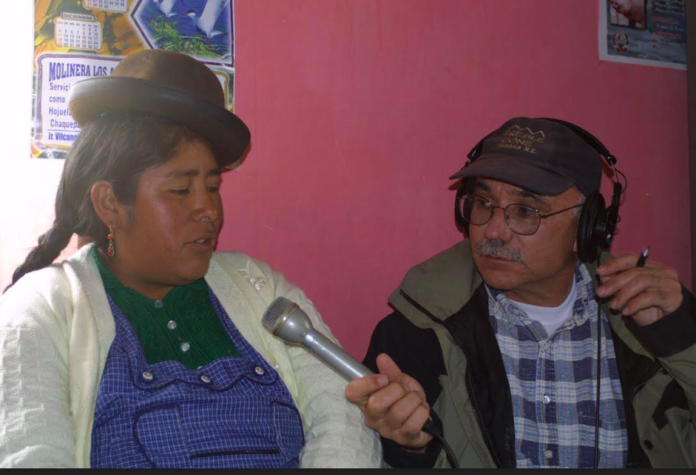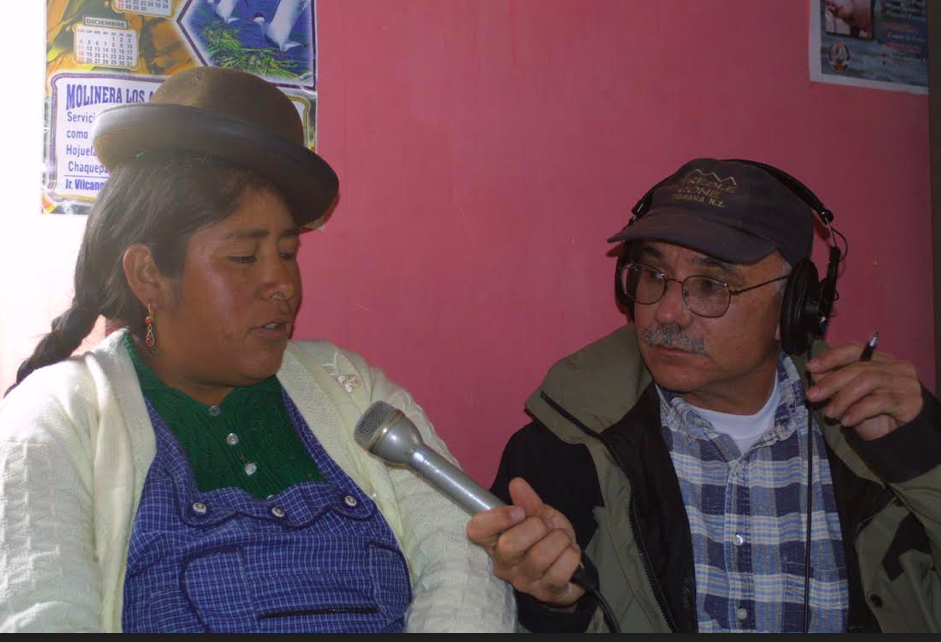
In 2005, I sat in a lounge off the Senate chamber in La Paz, Bolivia, waiting for an interview. I was wearing my best coat and tie. With my thinning hair and grey mustache, I could pass for a Bolivian of European descent. In fact, numerous people smiled and said “buenos días,” as if I was a familiar face.

Photo by Amanda Groty
The senators were mostly white men, reflecting the makeup of Bolivia’s political elite at that time. But that changed just a few months later with the election of Evo Morales and his party, Movement Toward Socialism (MAS).
Morales’s government nationalized natural gas and electric companies, defying both the US and the Bolivian oligarchy. So it’s not surprising that those forces now denounce Morales as a dictator and cheer his overthrow.
Bolivia held elections on October 20 this year. Opposition leaders, claiming vote fraud, organized mass, anti-government demonstrations. Sectors of the military and police sided with the opposition. Morales, his vice president and other top government leaders resigned under military pressure. Some went into exile in Mexico.
While the Trump Administration and mainstream media characterized the events as a popular uprising, Senator Bernie Sanders, Independent of Vermont, correctly called it a coup.
“It was the military who intervened in that process and asked him to leave,” Sanders said during the Democratic Party debate in Atlanta on November 20. “When the military intervenes, in my view, that’s called a coup.”
Some recent history
In 2005, I reported from Bolivia on the popular movements opposed to then President Carlos Mesa. The rich elite who ran Bolivia in those days followed US-inspired neoliberal economic policies by privatizing government-owned companies, even those providing drinking water and sewage lines.
The privatized water utility was owned by a French multinational corporation. It raised the sewage hook-up charge to $450, roughly eight times the typical monthly income in El Alto, a working-class city located above La Paz.
The people of El Alto sought Mesa’s resignation through mass protests. “We used force because this is an issue facing us and our children,” street vendor Alejandra Arteaga told me when I was writing for the Dallas Morning News. “When there was a strike or a blockade, we went up to participate.”
In June 2005, a new round of mass demonstrations forced Mesa to resign, and by December, Bolivians elected Morales president. He served three terms.
Poverty alleviation and indigenous rights
At a time when most Latin American economies were slowing, Bolivia under Morales and MAS reduced poverty by 42 percent and extreme poverty by 60 percent, according to a study by the Center for Economic and Policy Research (CEPR). In 2008, unemployment was cut in half, from 7.7 to 4.4 percent.
MAS made these advances because Bolivia defied conventional US economic prescriptions, according to Guillaume Long, a senior policy analyst at CEPR. “MAS opposed the neoliberal agenda and nationalized resources such as gas,” he told me in a phone interview.
The country’s indigenous groups, including Aymara and Quechua, saw significant gains under the MAS government, according to Bret Gustafson, an anthropology professor and Bolivia expert at the Washington University in St. Louis.
“The government passed anti-racism legislation,” he said in a phone interview. “Indigenous people were included in the highest level of the government and military. Indigenous languages and culture were celebrated under Evo.”
But those gains are in serious danger if the right wing stays in power.
Controversy: Morales runs again
Under Bolivia’s constitution, a newly elected president may serve two terms. In 2016, by a narrow margin, Bolivians voted down a referendum that would have eliminated presidential term limits. But in 2017, Bolivia’s Constitutional Court ruled that term limits were in violation of the OAS treaty on human rights, clearing the way for Morales to run again.
The conservative opposition angrily denounced the ruling, saying the court was packed with Morales supporters. But Gustafson says even some liberal and leftist Bolivians have a “deep memory of past dictatorial governments.” Moreover, Morales had not groomed a successor who could maintain party unity. “Morales was the glue that held everything together,” Gustafson says.
In the October 20 election, a dozen candidates vied for the presidency, including former President Carlos Mesa and Evo Morales. Under Bolivian law, a candidate can win by gaining just 40 percent of the vote if it is 10 percent more than the second-place opponent. After the final count, Morales won with 47 percent compared to Mesa’s 36.5 percent. MAS also won a majority in both legislatures.
The Organization of American States and the Trump Administration immediately alleged vote fraud. They claimed the vote count was halted when it seemed Morales would be forced into a runoff and then suspiciously re-opened with a Morales victory.
As explained in an exhaustive election analysis by CEPR, the official vote count never stopped. The unofficial “quick count” did stop, as planned beforehand, after tabulating 83 percent of the votes. The official count, which is the only binding result, continued uninterrupted until officials announced the results.
The last votes to be tabulated, which the OAS claims were suspiciously favorable to Morales, were in fact consistent with votes from areas traditionally supportive of MAS.
From both the quick count and final count, “You could easily determine that Morales won,” says CEPR’s Long, who was also an OAS observer in the 2017 Bolivian elections.
In short, there was no voter fraud that propelled Morales into power. But the misinformation, along with genuine anger from those opposed to Morales running at all, led to large demonstrations.
The US role
Bolivia is a major source of natural gas and minerals such as lithium, making it of great importance to multinational corporations. The US in the past supported military coups in Bolivia when civilian governments didn’t follow pro-Washington policies.
The US has a long history of training Bolivian police and military leaders. One of the leaders of the recent coup attended a course at the Western Hemisphere Institute for Security Cooperation (formerly known as the School of the Americas) at Fort Benning, Georgia.
For many years, USAID has funded projects to promote businesses in conservative, eastern Bolivia, pitting them against the movements of workers and peasant farmers.
Washington has the means and the will to instigate a coup in Bolivia. In the months and years ahead, more information will emerge revealing the extent of direct US involvement. But there’s no doubt the coup serves US interests and has full US support.
What lies ahead?
After the military forced Morales and other leaders to leave Bolivia, Senator Jeanine Añez, a little known ultra-right winger, declared herself president based on her position as second vice president of the Senate. Her initial cabinet had only one indigenous member and reporters quickly discovered racist tweets in her Twitter account.
Widespread looting broke out. MAS supporters mobilized against the coup, blockading highways leading to many cities. On November 20, six indigenous men were shot and killed in El Alto, in an act that protesters attributed to the military. To date more than thirty people have died and dozens have been injured.
In late November, demonstrations were halted in some MAS strongholds but continued in others as protestors demanded release of demonstrators arrested in previous protests. On November 24, MAS legislative leaders and Añezagreed to legislation calling for new presidential and legislative elections in April 2020, while prohibiting Morales from running.
From his exile in Mexico, Morales reluctantly agreed with the compromise. “In the name of peace, sacrifices have to be made and I am sacrificing my candidacy even though I have every right to it,” he told The Guardian.
“It was a practical recognition of the balance of power,” Gustafson says. “Evo still has widespread support. But any effort to bring him back would galvanize rightwingers, some military officers, and some moderates.”
Bolivia remains deeply divided. The right wing is split among several factions. While Morales can’t run, MAS will field another candidate for president in April, along with veteran legislators from both houses.
“Morales has a lot of personal appeal, but MAS also has popular support,” says analyst Long. “MAS remains a force to be reckoned with.
Reese Erlich’s nationally distributed column, Foreign Correspondent, appears every two weeks in 48 Hills. Follow him on Twitter, @ReeseErlich; friend him on Facebook; and visit hiswebpage.

